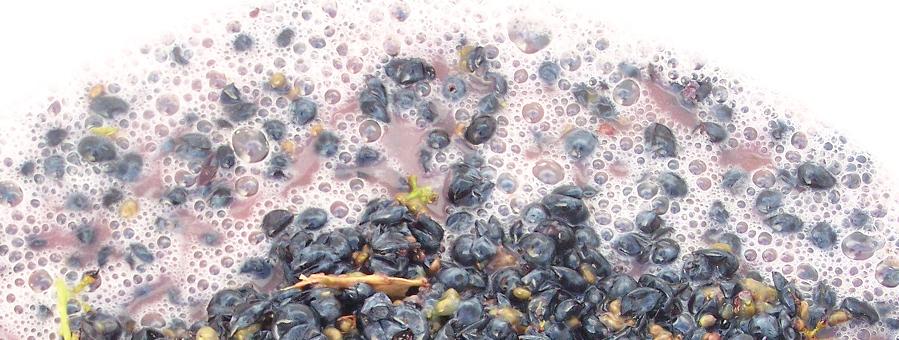
FERMENTATION CHAOS: THE ORIGIN OF COMPLEXITY (PART II)
Yeasts are microorganisms belonging to the mushroom family and, like all living beings, they need food to survive.
Sugar is an excellent food for their metabolism, but in the presence of oxygen we can say that it is practically wasted by transforming into simple water and carbon dioxide. However, it is in the absence of oxygen that the great miracle of the transformation of sugar into alcohol and carbon dioxide (alcoholic fermentation) occurs, but to understand the mechanisms that regulate the fermentation process we need to understand its fundamental variables.
In order to live, yeasts develop heat which heats the mass, increasing the temperature. This increase in temperature depends directly on the number of yeasts, the quantity of sugar and the bioavailability of the latter (a grape juice has a higher bioavailability than a dense and full-bodied fruit puree).
All these factors influence the speed of transformation of sugar into alcohol and the resulting heat development, as well as defining the duration of fermentation. Now it must be said that yeasts at low temperatures show a slowed down activity, but if temperatures were to rise above 40 degrees they would die, with consequent arrest of the fermentation process.
Imagine, for example, having two identical batches of pears undergoing fermentation, where in the first case we start from a lower population of yeasts and in the second case we start from a much larger population: if the yeasts are few, it takes longer time to transform the sugar into alcohol, but if there are too many yeasts, too much heat is produced all together.
It will therefore be essential to manage cooling so that temperature changes do not cause damage to the progress of the process.
If, however, we compare pears and figs in fermentation, with the same yeast population, we will have that the figs are much more sugary than the pears, therefore the fermentation will last longer as the yeasts themselves will have to transform more sugar into alcohol.
Keep in mind that yeasts multiply in the presence of oxygen, for this reason pumping over and punching down are always done to oxygenate the mass and encourage the multiplication of the yeasts. These operations are fundamental in the first days where it is necessary to increase the yeast population to start fermentation decisively; in fact, if these procedures are not carried out in the initial phase, the starter yeasts will be too few and the fermentation will tend to stop.
If the mass were to be oxygenated late, the little alcohol produced by the small population of yeasts would act as a multiplication inhibitor, making the procedure totally ineffective.
The vital chaos that is produced during a fermentation process leads to the generation of multiple compounds that were only potentially present in the raw material. Thus the complexity that is generated through fermentation must be preserved by correct distillation, which will allow the organoleptic profile of a brandy to be clearly distinguished from that of a liqueur or any infusion.
